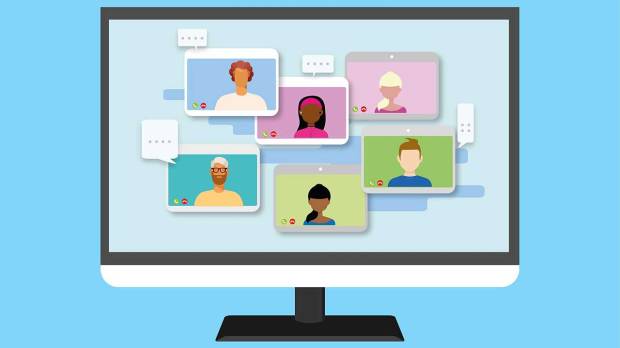In the pursuit of happiness, individuals often embark on diverse paths, seeking fulfillment, contentment, and joy. Amidst this journey, one principle stands as a guiding beacon: self-improvement. The quest to become the best version of oneself is not merely a contemporary trend but a timeless endeavor deeply woven into the fabric of human nature. What is it about self-improvement that makes it so intricately intertwined with happiness? What transformative impact does the journey of personal growth have on individual well-being and overall quality of life? In this comprehensive exploration, we delve into the profound connection between self-improvement and happiness, unraveling its intricacies and unveiling the profound significance it holds in shaping a life of purpose, fulfillment, and joy, thereby answering the question why self improvement is important for happiness?
Part 1: Understanding the Essence of Self-Improvement
To truly grasp the significance of self-improvement in fostering happiness, it is imperative to unravel its essence. At its core, self-improvement embodies a deliberate and continuous effort to enhance various dimensions of one’s life, encompassing physical, mental, emotional, and spiritual well-being. It entails the pursuit of personal development, the cultivation of positive habits, and the nurturing of a growth mindset that embraces challenges as opportunities for growth. Through self-reflection and intentional action, individuals strive to transcend their limitations, unlock their potential, and lead a more meaningful and fulfilling life.
Visit: benefits of character building for kids
Part 2: The Psychological Dynamics of Happiness
Happiness, often hailed as the ultimate pursuit in life, is a multifaceted construct deeply rooted in psychology. Research in positive psychology elucidates that happiness extends beyond the mere absence of negative emotions to encompass a state of flourishing characterized by positive emotions, engagement, relationships, meaning, and accomplishment. Self-improvement catalyzes enhancing each dimension of happiness, enabling individuals to cultivate resilience, optimism, and a sense of purpose in their pursuit of personal growth and fulfillment. Ignite your potential and stand out from the crowd with our cutting-edge personality development training programs.

Part 3: Empowering Growth Mindset
Central to the journey of self-improvement is the cultivation of a growth mindset—an underlying belief that one’s abilities and intelligence can be developed through dedication and effort. Unlike a fixed mindset, which views talents and capabilities as static traits, a growth mindset fosters resilience, perseverance, and a willingness to embrace challenges as opportunities for learning and growth. By cultivating a growth mindset, individuals empower themselves to overcome obstacles, adapt to change, and unleash their potential, thereby fostering greater happiness and fulfillment in life.
Part 4: Setting and Achieving Goals
Goal setting serves as a cornerstone of self-improvement, providing a roadmap for personal and professional development. By setting clear, achievable goals that align with their values and aspirations, individuals gain clarity, direction, and motivation in their pursuit of personal growth. The process of goal setting not only instills a sense of purpose and accomplishment but also fosters a growth-oriented mindset, as individuals strive to overcome obstacles and persist in the face of adversity. Through disciplined action and perseverance, individuals can turn their aspirations into reality, experiencing a profound sense of fulfillment and happiness in the process.
Visit: tips for social inhibition
Part 5: Cultivating Positive Habits
Habits are the building blocks of behavior, shaping our daily routines, actions, and ultimately, our lives. Cultivating positive habits is integral to the process of self-improvement, as it enables individuals to create sustainable changes and enhance their overall well-being. Whether it’s adopting a regular exercise routine, practicing mindfulness, or cultivating gratitude, positive habits serve as catalysts for personal growth, fostering greater happiness, resilience, and fulfillment. By intentionally cultivating habits that nourish the mind, body, and spirit, individuals can cultivate a life of balance, purpose, and joy. Build your personal brand and command attention with proven personality development strategies provided in personality development course in delhi.

Part 6: Nurturing Emotional Intelligence
Emotional intelligence, often described as the ability to recognize, understand, and manage emotions, plays a pivotal role in personal growth and happiness. By nurturing emotional intelligence, individuals develop greater self-awareness, empathy, and resilience, fostering healthier relationships and a deeper sense of connection with themselves and others. Through practices such as mindfulness, self-reflection, and effective communication, individuals can enhance their emotional intelligence and cultivate a greater sense of happiness, fulfillment, and well-being.
Visit: relationship management skills
Conclusion:
In conclusion, the journey of self-improvement is not merely a means to an end but a transformative process that empowers individuals to unlock their fullest potential and experience greater happiness and fulfillment in life. By embracing personal growth, cultivating positive habits, and nurturing a growth mindset, individuals embark on a journey of continuous learning and development, leading to a profound sense of satisfaction and well-being. In essence, self-improvement is not just about becoming better—it’s about discovering the true essence of happiness and fulfillment. Why Self Improvement? Because it is the gateway to unlocking a life of purpose, joy, and limitless possibilities. As we continue to embrace the journey of self-improvement, may we find fulfillment in the pursuit of growth, and may our quest for happiness be forever intertwined with the journey of becoming the best version of ourselves.























